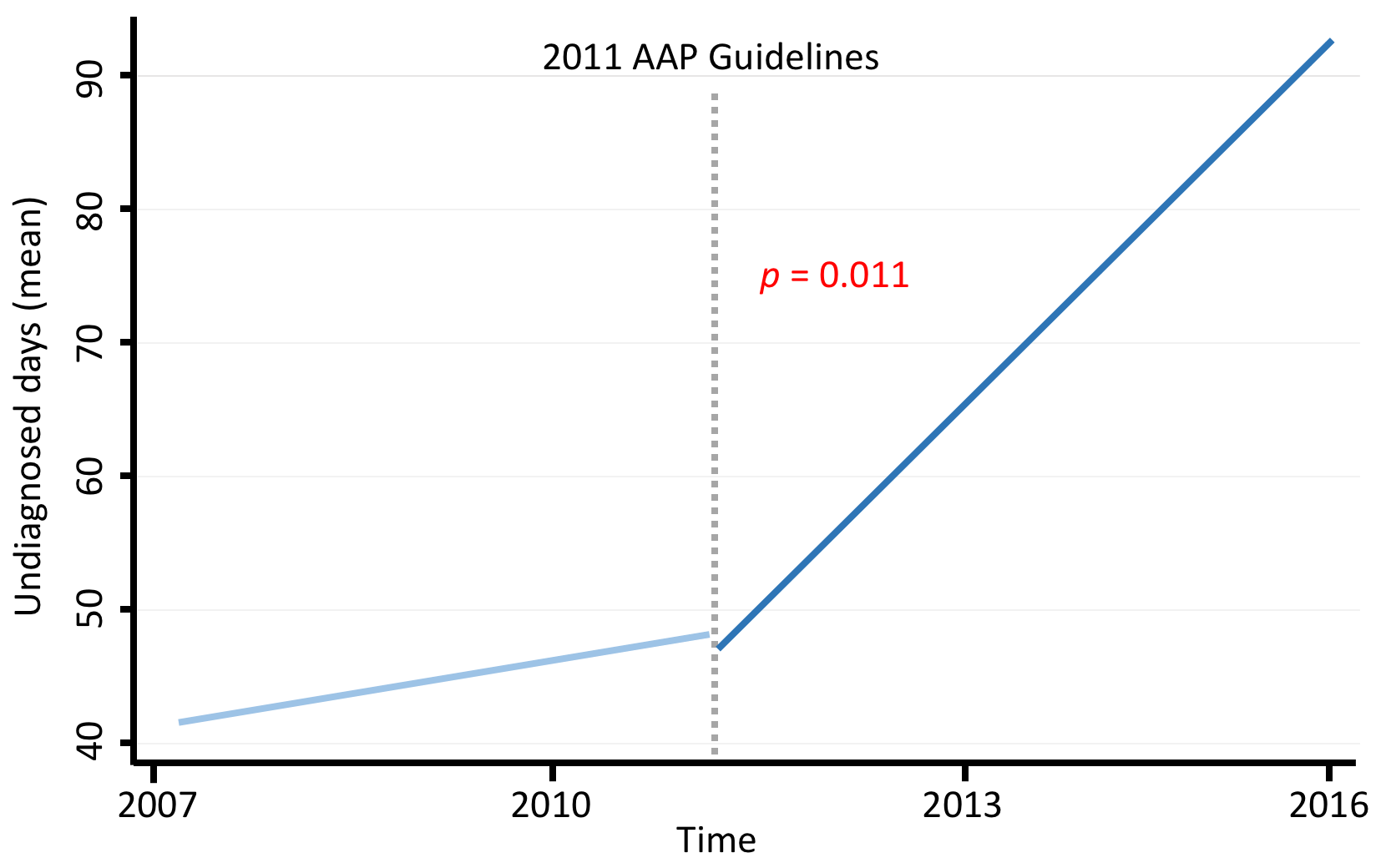The Delay in VUR Diagnosis Since the 2011 AAP Guidelines
Ted Lee, MD, Chandy Ellimoottil, MD, Courtney Streur, MD, Lauren Corona, MD, Oakley Strasser, BA, David Bloom, MD, Vesna Ivančić, MD, Kate H. Kraft, MD, John M. Park, MD, Julian Wan, MD.
University of Michigan, Ann Arbor, MI, USA.
Title:
The Delay in VUR Diagnosis Since the 2011 AAP Guidelines
Background:
A significant paradigm shift has recently occurred in the evaluation of children with a febrile UTI. The 2011 AAP guidelines recommend against routine VCUG after a first-time diagnosis of febrile UTI in children aged 2 to 24 months. We recently reported a significant decrease in the national trends of VCUG utilization and incidence of VUR in children 0 – 2 years of age since the 2011 AAP guidelines. The objective of this study was to assess whether these changes have resulted in a delayed diagnosis of VUR in children with underlying reflux.
Methods:
We performed our analysis using CliniformaticsTM Data Mart (Optuminsight, Eden Prairie, MN) administrative claims data from January 2007 to December 2016. Our cohort included children 0 – 2 years of age who were diagnosed with VUR by VCUG following initial pyelonephritis episode. All outpatient, emergency room, and inpatient encounters with UTI or pyelonephritis diagnosis codes prior to VUR diagnosis were recorded. Time between the first UTI or pyelonephritis related encounter and VUR diagnosis date was used to measure undiagnosed days. We performed an interrupted time series analysis to assess a difference in the trend of undiagnosed days before and after the 2011 AAP guidelines.
Results:
A total of 2,997 patients less than 2 years of age were identified. 2,077 patients were diagnosed with VUR in the pre-AAP cohort and 920 patients were diagnosed with VUR in the post-AAP cohort. The mean number of days between initial pyelonephritis episode and VCUG in 2011 was 49.2, and the mean number of days in 2016 was 186.6 (p < 0.001). There was a significant increase in the rate of change of undiagnosed days between the pre-and post AAP time periods (p = 0.011) (see Figure).
Conclusions:
There has been a delay in the diagnosis of VUR since the release of the 2011 AAP guidelines. The period of time between initial UTI and diagnosis of VUR is increasing in patients with underlying reflux, resulting in a delay in medical management. These changes could impact rates of pyelonephritis and renal scarring.
Figure. Interrupted time series analysis of undiagnosed days using 2011 AAP guideline release as intervention 
Back to 2018 Program




